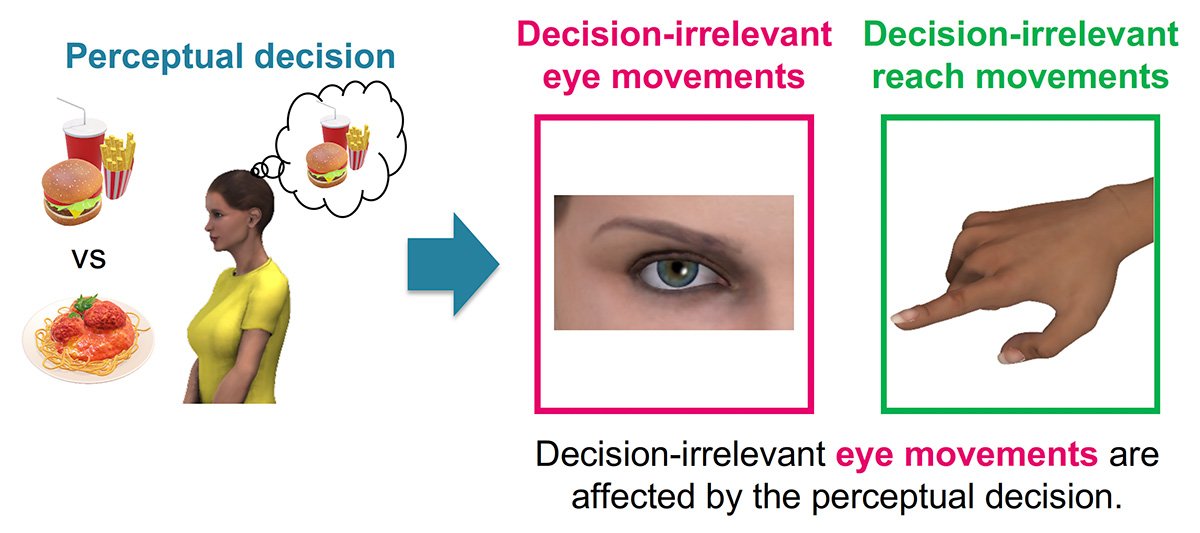Researchers worldwide are seeking visible indicators of what is going on inside our minds as we think about issues and take decisions. They are searching for the ability to probe the invisible workings of the mind by monitoring subtle signals from the body. New insights from experiments at Tohoku University have revealed a link between eye movements and certain types of decision-making. Kazumichi Matsumiya and Shota Furukawa at the university’s Graduate School of Information Sciences reported their findings in the journal Communications Biology.
“Our work has revealed that eye movements that are not related to the visual requirements for decision-making are nevertheless affected by the process of making decisions,” says Matsumiya. Previous research in the field has analyzed how eye and hand movements affect decision-making, but did not look at the issue from the other direction to investigate if decision-making affects eye and hand movements.
The new research was conducted to assess the validity of the previous general assumption that motor movements, such as by the eyes or hand, will not be affected by decision-making activities in situations where the movements are not directly related to making the decision.
The Tohoku University researchers instructed participants to move their eyes and right hand towards targets that were not relevant to an ongoing perceptual decision-making task. Participants were first given a separate task where they were asked to decide and report on the direction of movement of a visual stimulus that was briefly presented on the display. This was defined as a perceptual decision-making task. The participants then performed the task in which their eye and hand motor movements were irrelevant to their decision-making. Comparing the results of the two tasks allowed the research team to identify and measure any effects of decision-making on eye and hand movements that were irrelevant to the decisions.

“We found that perceptual decision-making interfered with unrelated eye movements but not hand movements,” Matsumiya says. “This demonstrates that nerve signals involved in making decisions continuously flow into the oculomotor eye-movement system, even when multiple motor actions are irrelevant to the decision-making,” he adds.
The researchers expect that their findings will contribute to developing new technologies for inferring when decision-making tasks are proceeding in the mind, even when making the decisions does not involve any movements of the eyes.
This could be used to advance fundamental research into what is going on inside a person’s mind, by monitoring indirectly when decisions are and are not being made.
It might also be used in more practical applications, such as monitoring attentiveness when crucial tasks involving making significant decisions are being performed. For example, it may be useful for mental care support, dementia care support, and crime prevention.
- Publication Details:
Title: Perceptual decisions interfere more with eye movements than with reach movements
Authors: Kazumichi Matsumiya and Shota Furukawa
Journal: Communications Biology




